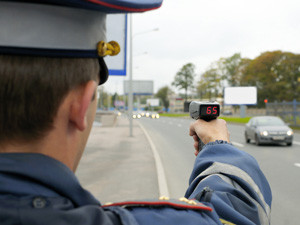
Drivers of some high-end motor vehicles, with built-in crash-avoidance technology, could find themselves inadvertently breaking the law, because the systems also act as speed-laser jammers.
Under the National Road Traffic Act, no one can use a car that is fitted with a device that "interferes or detect[s] the use of a speed-monitoring or measuring device". In addition: "No person may have in his or her possession, while travelling in a motor vehicle, a device that interferes or detects the use of a speed-monitoring or measuring device."
However, some high-end cars have built-in crash-avoidance technology, which works by emitting a laser that, in some cases, operates in the same open frequency as the lasers used by the traffic department. As a result, the technology inadvertently acts like a laser jammer.
The lasers used for speed law enforcement often detect when they are being jammed, as information - such as speed and registration numbers - will not be displayed on the screen.
Open space
Howard Dembovsky, chairman of the non-profit Justice Project SA, says traffic law enforcement officials use the speed trapping device in a frequency that has not been specifically allocated. This is the same frequency that other devices can work in, such as television remote controls.
As a result, drivers could be unaware they are criminals. The law stipulates these devices cannot be used to interfere or detect speed monitoring equipment, or even have it in their possession while travelling.
Because law officials work in an open frequency, the drivers of these vehicles are stuck in the middle, says Dembovsky. He says the punishment should be for using the devices on purpose to avoid being caught for speeding, and not just for having them.
Dembovsky adds that crash avoidance systems are becoming more popular, and are not the sort of device that a motorist can switch off. Cars are legally coming into SA with this sort of safety equipment as standard, he notes.
Loophole
There is a conflict between the South African Bureau of Standards' standards and the National Road Traffic Act, which creates a loophole, says Dembovsky. He adds that the equipment is also sold in the after-market and can easily be bought off the shelf.
National Prosecuting Authority spokesperson Bulelwa Makeke says she has not come across such cases and cannot say how they would be dealt with by the prosecuting authority. She says such an instance would be "interesting", but points out that prosecution would depend on the charges laid by law officials.
Several attempts to contact Tiyani Rikhotso, the Department of Transport's spokesman, were unsuccessful. However, he previously said the lawmakers would have meant that Act to be interpreted in such a way that the only reason a person would have such a device in his/her vehicle is if s/he intended to get away with speeding.
Share